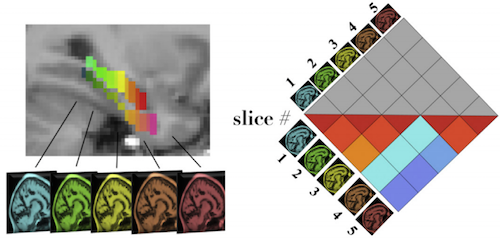MTL parcellation paper in press

Now available online! This paper extends some of our prior work (Ritchey et al., 2014, JoCN) by using resting-state functional connectivity to parcellate the medial temporal lobes along the longitudinal axis. We found that a data-driven parcellation scheme split the parahippocampal gyrus into 3 clusters: one corresponding to the parahippocampal cortex, and two corresponding to anterior and posterior portions of the perirhinal cortex. These clusters had distinct patterns of connectivity with the rest of the brain, and importantly, these areas played different roles in associative memory encoding.
So what does this mean? First, the parahippocampal gyrus is not a homogeneous structure, but rather it comprises at least 3 areas with different connections. Second, the different connections seem to be related to differences in memory-related function– differences that we did not observe until we applied our parcellation algorithm. This speaks to the utility of connectivity measures for mapping out the functional organization of medial temporal lobe cortex.
Also - huge congrats to first author Shao-Fang (Pam) Wang! She completed this work as a research assistant at UC Davis, and this is her first first-authored publication.
Reference:Functional connectivity based parcellation of the human medial temporal lobe.
Wang, S.-F., Ritchey, M., Libby, L.A., & Ranganath, C. (2016). Neurobiology of Learning and Memory.